Here it is, the long awaited 2023 Kawasaki Z900RS Cafe
I've been waiting to get my hands on one of these for months and now that I have, let's take a closer look
Hi everybody, it's Peter and in this video we are gonna go in depth on the Z900 RS Cafe. This is the 2023 model. Now of course, if you've been following my channel, you know that I bought the Z900RS Se, the non cafe model, and I've watched a bunch of videos on this bike mostly because I bought one. And I want to go over a lot of the differences that other people aren't pointing out. A lot of people are saying it's just got a fairing and it's just got the seat and that's the only difference. But there's a whole bunch of subtle differences that I'm gonna point out in this video as well as doing a complete in-depth review. So if you have questions about this bike, make sure you let me know in the comments below because I'm filming here at Jim Gilbert's Power Sports.
Now this cafe version kind of adds to that overall Superbike type feel. They've raced the old original bike like this and you had this sort of classic looking wind protection here. Now from a modern perspective, this does give you a little bit extra wind protection over the regular RS model, the non cafe model. It also has different uh, style handlebars and of course that different seat which allows you to sort of tuck in place a little bit better. A lot of it is styling, but it does make some practical differences in the way you ride. So I'm going to get on this thing in a second where you can see the seating position and maybe we'll compare that to the regular uh RS that I own, which has just sitting off camera here. So we can throw it in here just so you can see the comparison.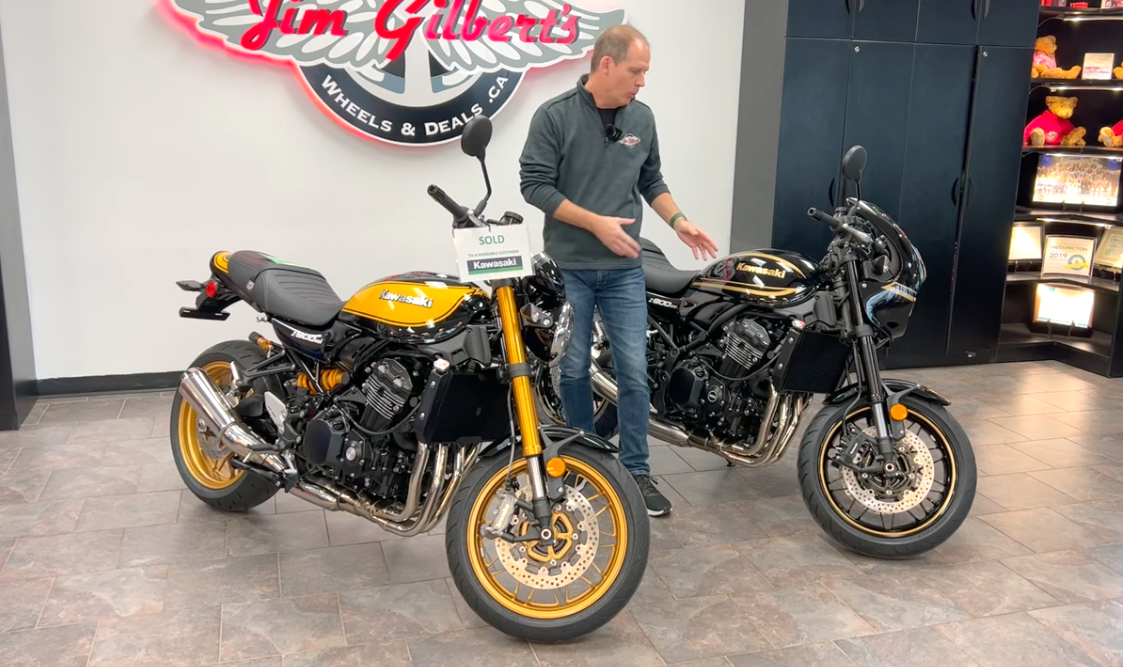

So this one tops out at a, uh, you know, they say it's somewhere around 110 horsepower seems to be the agreed upon number, uh, at around 8,500. So the P horsepower for this bike is a thousand RPM less than the Z 900, but throughout that mid-range it actually makes more power according to some of those dino graphs out there. The difference as well is a 12% heavier flywheel. Now if you don't know what that means, it doesn't matter too much. Basically what that means is the engine takes a little bit smoother time to build revs and a little bit smoother on holding the revs on a shift or something like that. So it gives you more of that classic bike feel, whereas the Z 900 is a little more frenetic, maybe a little more, you know, immediate, that kind of thing. And again, we're talking a 12% difference in the flywheel.(03:31)
So not significant differences. So again, peak horse powers down, but throughout the range you've got the same torque torques available lower in the RPM rev range. And through that mid range you probably make a little bit more power according to Dino graphs by other bike magazines. So the key thing here is good power throughout. Now the other difference between this and the Z 900 is you have a lower first gear. So that's better for acceleration and a taller sixth gear. So that's better for lower revs on the highway. Really to me what that does is makes this a better all around, more versatile bike. And then of course there's the style, the real reason to buy this bike is style, but there is added comfort here as well. So let's start looking at some of the styling details. And I'm gonna go over a whole lot of differences between this and the bike that I own, which is again is the non cafe model
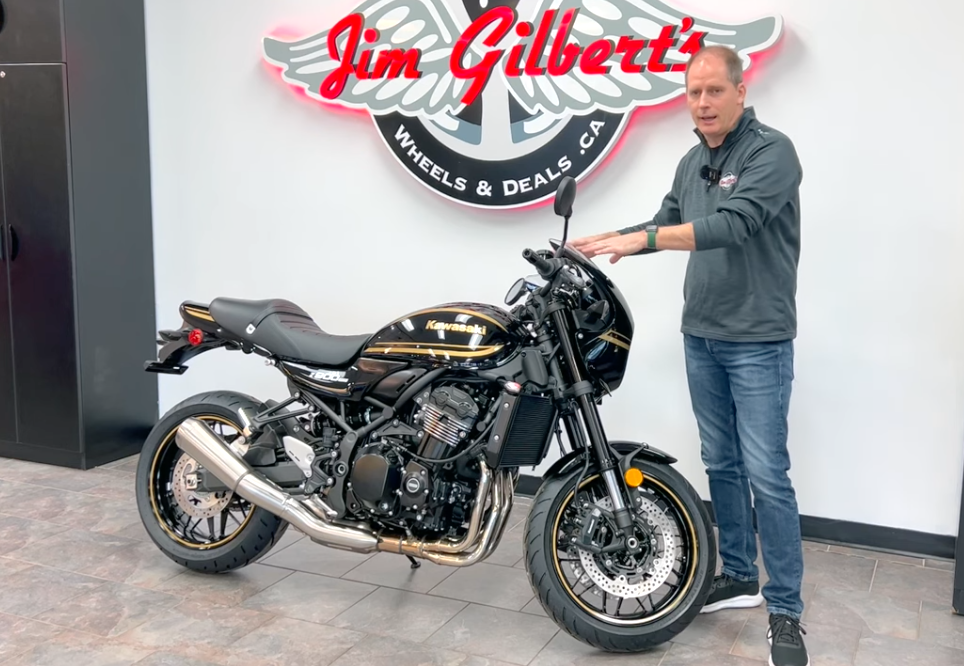
That is the SE model. So you're gonna have some gold wheels there, you're gonna have some gold suspension tubes, other things like that. But there are differences in the frame as well. The frame on my bike, which you can see here, this one here is kind of a matte color where the frame on mine is all shiny. So it does give a little bit different look to this entire frame when you get up close and see it closer. The other little strange thing is double overhead cam is written here on a small circle on the other side. It's a larger circle out on the casings here and that D O H C, the double overhead cam was a big part. It was stamped into the original Zed one and it was a real source of pride for the original Zed one because Honda was their biggest competitor back then.
They were running a single overhead cam. So as far as a retro look, pointing out that this is a double overhead cam, that was a big piece of that bike and they have that on this bike, whereas my bike, instead of having these labels here, it's just sort of a silver label. So kind of an interesting thing there. The rest of it is pretty much to do the cafe model here and we'll talk about some of these exact seating positions and that kind of thing. So let's start with the how it sit, what it's like to sit on this and go from there. So I'm gonna get into details about why the seating position is different, but let's just do this first. So I'm about six feet tall, I'm gonna try to line up my other bike so it'll fade into that. So you can see the difference here overall from a seat of the pants kind of feeling.
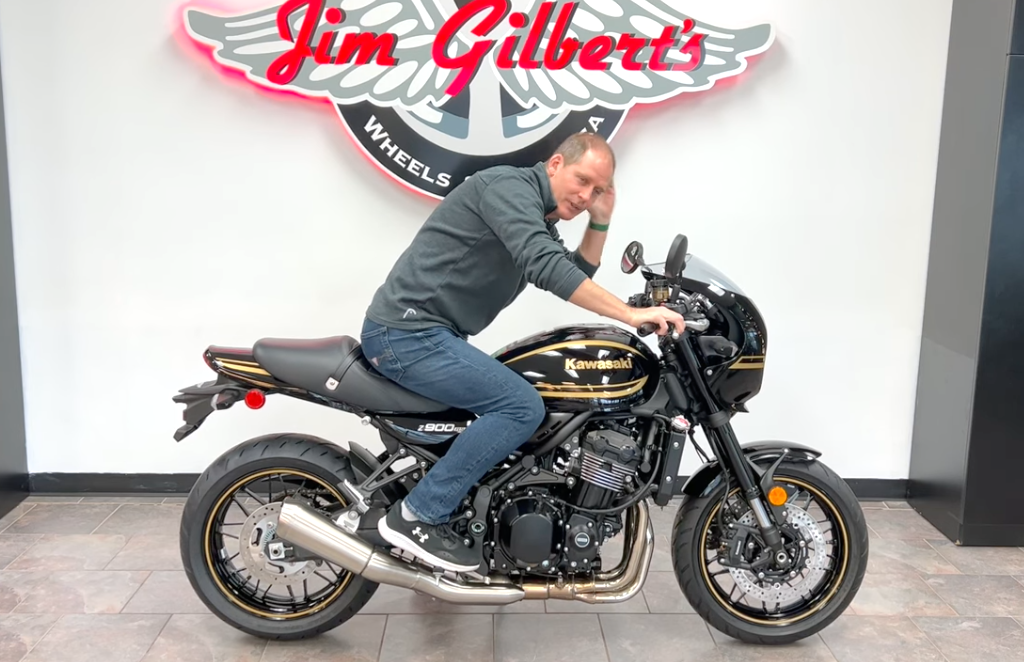
Now I zoomed down a little bit further because I want you to see sort of the line that the faring causes over the gauges here. Again, that's one of the big differences between this and the regular RS model. But the gauges and the functions here are identical between both bikes and I really like this display here. So of course the traditional gauges. Now a lot of the American bikes have the miles per hour in blue in Canada here. We don't have miles per hour listed, but it is super clean because of that and it really kind of tachometer and speedometer kind of match the font because of course the uh, tachometer has no inside gauge where this one would have a mile per hour or a kilometer an hour inside gauge in the American model. So I really like this kilometer an hour display that we get in Canada here cuz it's super clean and super crisp.
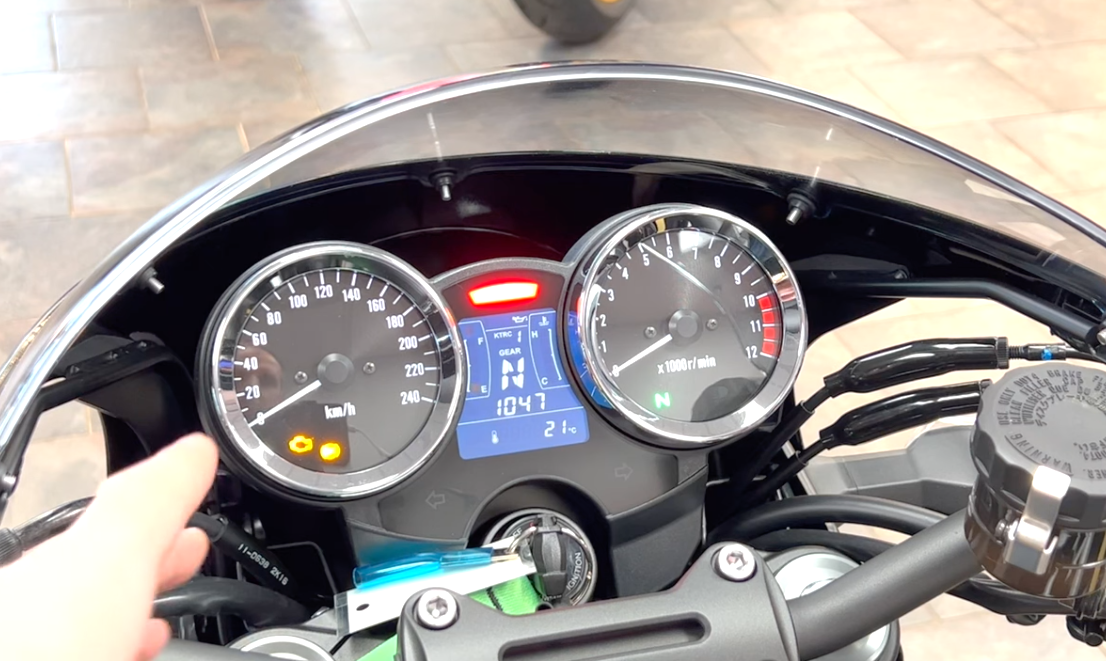
So speaking of getting gas, let's look at the very bottom of the display down here. I'm gonna use the bottom of that selection button that I just showed you there. And we're gonna cycle through here. Uh, right now it's 21 degrees that is the outside temperature or ambient temperature where we have inside of course in the building right now. Then I can go down to range. So that is kilometers till empty. Now of course that is uh, based on how you've been driving. So if you've been driving very aggressively, it might read less or if you've been driving very efficiently and then head out, uh, to a, you know, less efficient way. That's just something to keep in mind. So it's a, it's an estimate but it gives you an idea. Then you have average kilometers per liter, I think you can set that up for leaders per hundred kilometers as well.
And then you have your instant leaders per hundred or kilometers per liter, which again I think can do leaders per hundred kilometers. Then you have trip E, trip B, excuse me, trip A and there's your overall odometer there. Temperature gauge on the far right side you got a little oil light up top and then through the center KR, or sorry K T R C is the traction control. So to change that one I'm gonna hit the select button in the middle of that button that we talked about earlier. And when you hold it down for a second, oh sorry, yeah, there we go. If I just tapping it, there we go. If I just tap it the K TRC light blinks or the number one blink, so I can go up and change it off or I can come down from off to one and then to two.
So again, I'm using that selection switch up, turns it to a lesser setting, so off one or two and uh, going down change it from off to one and to number two as well. So we're gonna leave it on number one. That's probably where I would leave it. Number two is really probably for rain, although you can use it as uh, a little bit extra precaution there as well. And that's the control. So when you use that selection switch outside of choosing your traction control, all it does is change on the very bottom here odometer. You can go up or down on some of the bikes, you have to cycle through everything because of the same controller, the way it works on their screens. This one you can see 'em on trip B I can go back to trip or sorry, trip B I can go back to trip A and back to trip B
So I can go up and down on the selection switch. I don't have to cycle through everything. So good display here. Big thing I like is that really clear, big, uh, gear indicator there. So, um, just of course not something retro bikes have, but I just appreciate that on a modern bike. The other cool thing is the signal lights. Um, just a little visual interest piece. You know, they're kind of outlined as opposed to filled right in and they're separate for left and right which are on the retro bikes. They wouldn't be separate for left and right, but I think that's just nicer to have there. While we're looking here, we should point at the uh, adjustable suspension comes on this bike and let's do that right now. So on the top of each fork tube is an identical tensioner there. So uh, you can change it harder or softer and it is identical on both sides.
So you wanna make sure that however many times you're turning it is identical left and right. There's already instructions in the owner's manual. The bike comes set up from the factory in the middle section so you can soften it or firm it up, uh, from there. But you do have that adjustment. We're sitting right there on both, uh, both forks here or both sides of the fork. So that makes it super simple. Let's take a look at the headlight here while we've got it on. You can see it is an L e D headlight and it has the ability to press the trigger on the left side switch here to flash that high beam. I don't know, is that working there? Uh, not, not until the vehicle's on. So I can use the trigger to flash the high beam, which would be the other side of the light there and I can also uh, turn it on and off with the um, switch.
So you can just trigger it on and off or you can leave it on and off. But again, that whole cow on that L e D light, you got this classic look with the modern light which makes it kind of look like a retro modern, which is what it is. So in yesterday's video we took the 2023 Kawasaki ZX6R and we talked about how everything in this general area is all the highest level type stuff. You've got the radial mount calipers on that one, you've got radial mount calipers or, or uh, cas on here. Large disc heavily vented. Of course the bike I have is the SE model that comes with brbo brakes, but the style is the same. Same thing with the upside down forks here. That gives you a little bit more stiffness in the upper fork tubes. A little bit less unsprung weight.
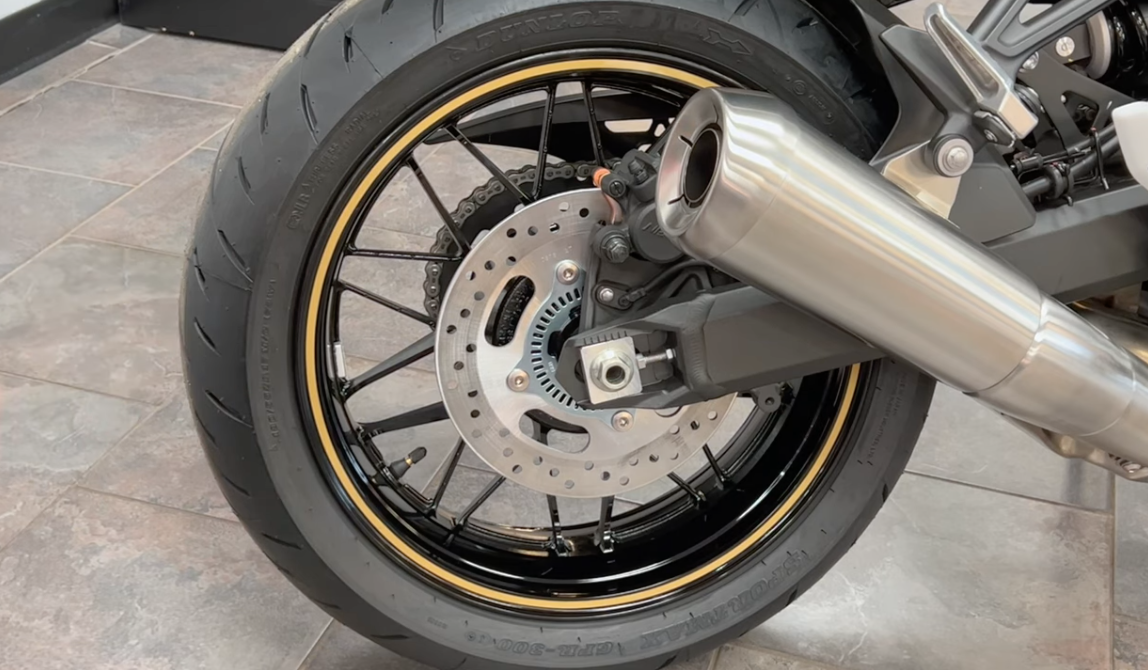
So let's take a closer look at the seat here. Obviously again, on the regular RS it's a little bit more of a level seat and this one's got that curl up. Again, it helps with that tuck position. It's also just styling, right? I mean you're not really tucking in here. It gives them more retro look and it gives it kind of like a, a solo rider look but still allows you to take a passenger whereas my bike will have this sort of ribbed effect all the way through. This one just has sort of the smooth section there, but you do have that passenger uh, grab, which again, this is probably as much style as it is anything else? Couple things I wanna point out. Right here is a place to tie down some of your luggage and lemme see, see if you can see it there.
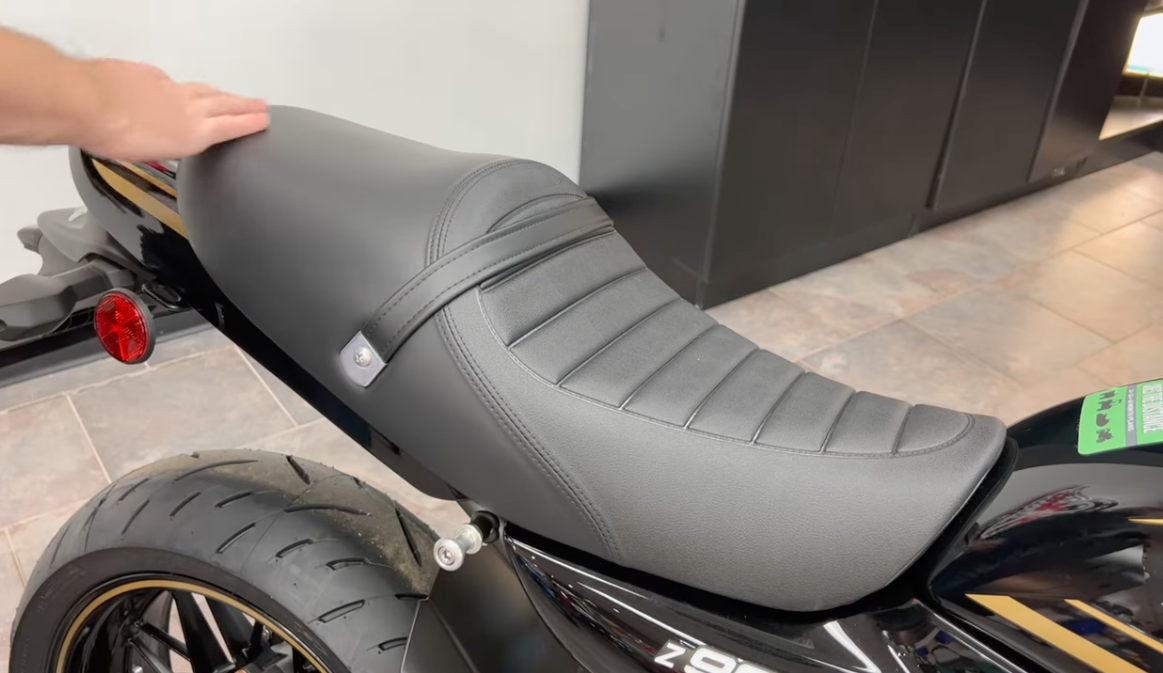
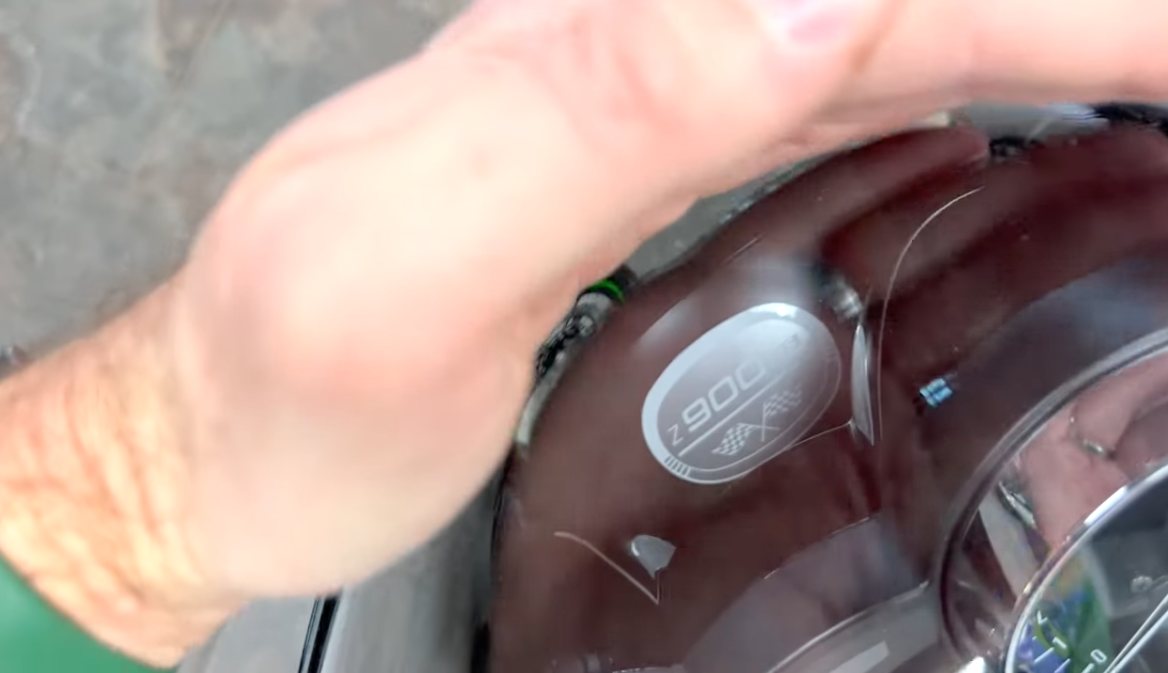
But I wanna point out here with your clutch lever. Now there's a lot to talk about the clutch but I'll try to make it quick here. First of all, it's adjustable. You can adjust this for reach as well as the um, brake on the other side for reach. So whether you have smaller hands or larger hands, no problem. But it also is a slipper and assist clutch and a lot of people are really impressed with the light clutch pull on the bike like this. So slipperiness list assist clutch does two things. It's racetrack sort of derived, but the slipper side of things allows you to just dump the clutch after a downshift. And sometimes when you do that, if you haven't rev matched properly, the rear wheel can have a lot of sort of engine braking and it can cause your rear wheel to uh, you know, skit a little bit.
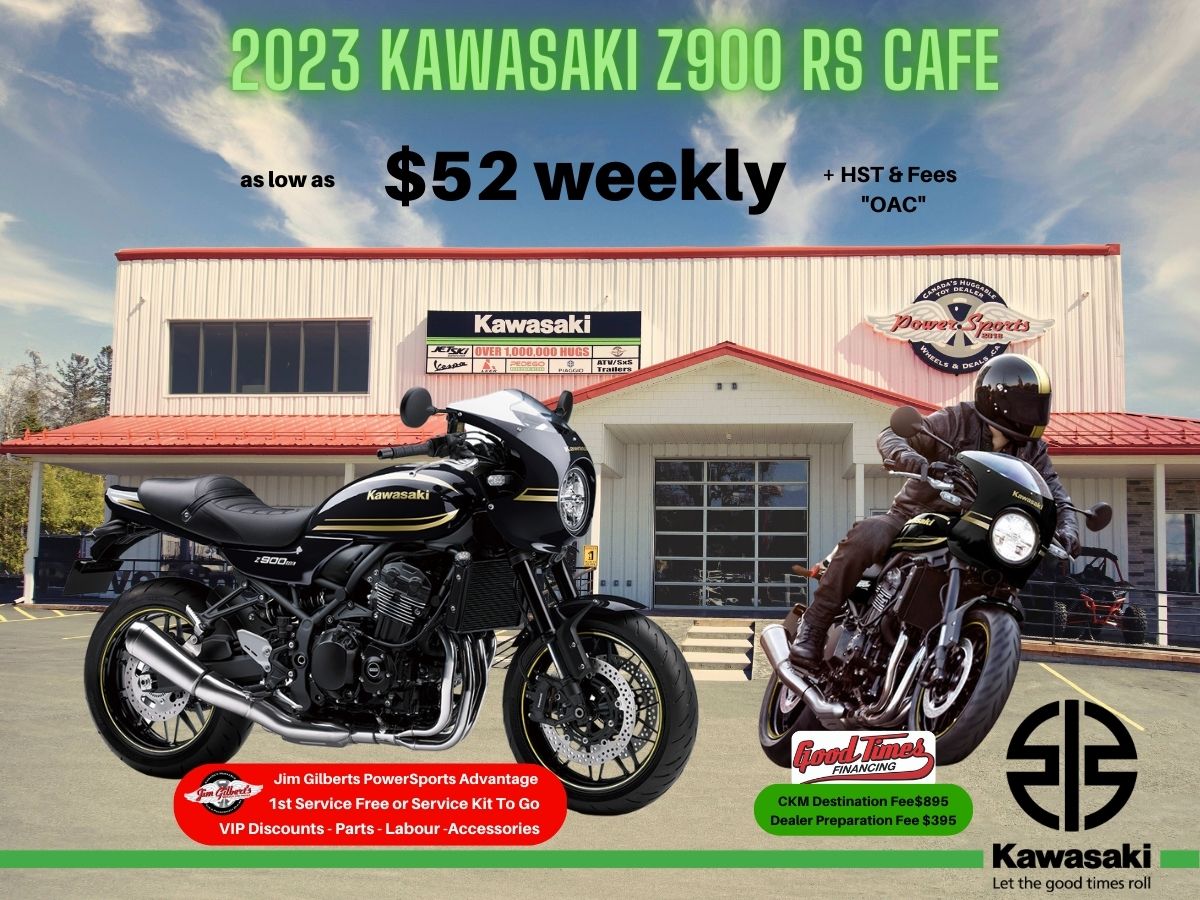
So we're gonna do that next before we go over why you would wanna buy this bike and what's if it's right for you. All right, so let's start out front with this. Of course you've got this nice kind of uh, faring. Everyone knows about that. What I didn't know about is inside that faring you can see a little sticker here that's kind of hard to film in the lighting here from the studio light, but it says Z 900 Rs and it has a little uh, checkered flag underneath that. Let's see if I can get to that angle here without the glare. There we go a little bit down there. So it's kind of a cool little detail that you don't always see and of course there's no detail difference on the um, on the front of mine there you still have the sort of uh, reflective uh, piano black kind of on the gauges there as you look through there.
And again, depending on the bike you buy, you may have this in more of a silvery tone on both of these bikes. Today it's the same sort of matte black. Again, my bike has the gold here, so ignore the gold has a different upgraded front shock, although it's just two different, I don't think it's any real upgrade. And the olin's shock, which brings me to the point of these things are brought in for performance, the oland shock and the Brembo breaks. It's interesting that the cafe model doesn't have those yet, so there's opportunity for Kawasaki to maybe look in that in the future. Looking at the frame here, again we talked about that sort of matte black look to the frame here and then the double overhead cam on this side. We'll come around to this side over here as well and we'll see the larger double overhead cam label over there.
The other thing I wanna point out is on some of these models you're gonna have sort of a silver style, um, side to the radiator on both the bikes I have today. They are black. Mine has a radiator cover on that, which of course you can add on either one. So let's take a look here. You can see no double overhead cam logo right there. And you've got, although you have the sort of matte black up here, the frame underneath is all shiny black on this one as opposed to the matte black. And of course the chromed exhaust versus the matte exhaust. This one does have an accessory center stand added. It would look the exact same on the uh, cafe racer there. But again there's that there with no real label. And then we'll come around this side here and same thing here, no real label on this larger side.
So you do have a few extra little details that make things interesting. I really like the way, and it doesn't show up on camera, but the way this striping comes off the front here, it kind of flows into this side here and it aligns better when the vik is sort of sitting straight as well. So it just kind of looks really sharp the way the paint ties in there off the fairing where of course without a fairing there is no tie in so much, although this one because the coloring does have tie in through there as well. The other difference is Z 900 Rs is going to be labeled in black and white on this one here and on uh, the SE version the RS is in red, so it's only the SE version with the oland shock with the adjuster and the brembo breaks here that has that in red.
So just couple of the little differences that you don't always see in addition to obviously the seat, obviously the handlebar. Actually let's just show you the handlebar for a second here. I don't know if it'll show up great on camera. Excuse my terrible camera work, but this is a much thicker bar. It's about an inch here going down about seven eighths of an inch or so there. And I didn't know that the cafe here would have a smaller handlebar. It's just noticeably smaller there, uh, which is interesting to me. And uh, you know this one of course not chrome here that uh, sort of matches the frame color there to blend in. So just an interesting little uh, differences between the two. So let's talk about who this bike is for. Well first of all, this nine 50 cc or 9 48 CC engine four cylinder engine is a pretty powerful engine.
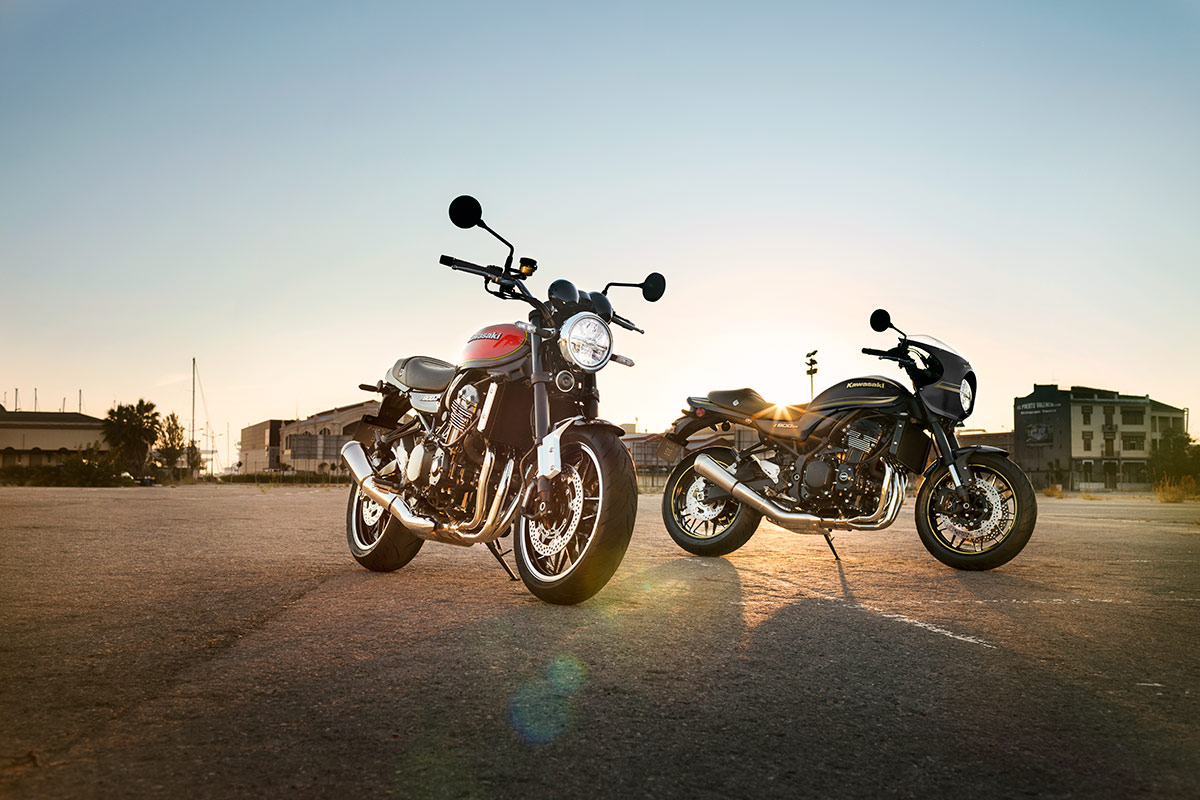
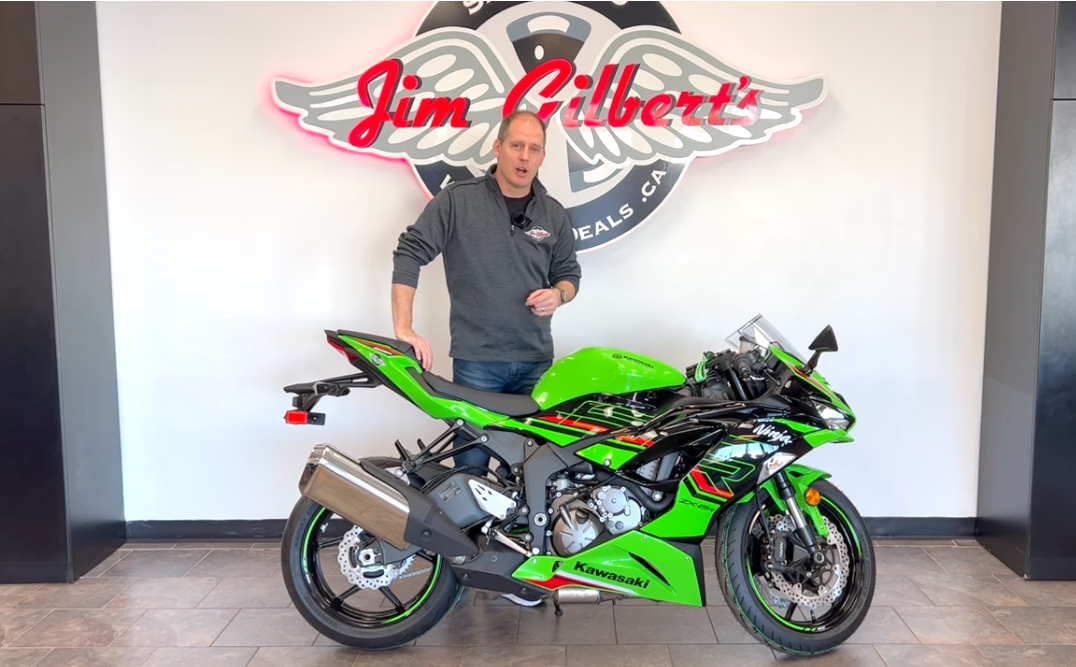
These TFT displays now can send your email notification, they can send your text notification right to the screen. Those are things that I don't want on my screens anyways and if I had a TFT display, I wouldn't be putting them through to it anyways. So I love the simplicity of this, the clean lines. This is the kind of bike where people are gonna come up to you and they're gonna ask you what year it is and you're gonna tell 'em it's a 2023 because underneath it really is a 2023. Hey, I just looked down and noticed one thing. The Kawasaki logo here is gold to match the stripes here, it's silver on every other bike. So, uh, every other uh, RS that I've seen. So little difference there. So who is it for? Well it's for people that really enjoy it. If you have a history with this bike, if you remember the original 1972, which I don't, I was born in 1979 just like when Jim Gilbert's PowerSports, Fredericton was started.
I don't have a tie to that, but if you have a tie to those original bikes, obviously this is gonna bring back memories for me. What it does is it brings back to a time where people really enjoyed just riding, but it brings it up to a standard where you've got fully modern brakes, far more performance. I was talking to a guy the other day that had the original version of my bike in the 1970s and he sold it a couple years later cause it had too much power. Well these ones have more power than that again, but they also have a frame that can handle that power. So you really have the stiffness and stability that you need around corners, better breaks, and of course the traction control as well. So you've got a lot of things that make it really fun as a modern bike, but that classic feel really does carry through to how you feel when you're driving it.
It's a fun, fun, fun bike. Really versatile and I think it's good for a lot of people and that's pretty much why I bought one. So fairing is a thing that you have to decide if you want or not. It does offer wind protection, it does offer some styling. You can do aftermarket uh, fairings on the other one for just wind protection, but it's not gonna have the clean look of this. So there you go. There's the comparison. The quick overview of maybe not so quick overview of the Z900 RS Cafe. If you wanna know more about this bike, make sure you subscribe because I have a full playlist following my ownership experience of my Z900RS SE. But we can continue to come back to this cafe model as well. And we'll answer your questions both in the common section and in future videos. Thanks everybody for watching.
